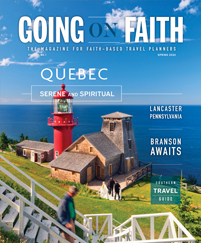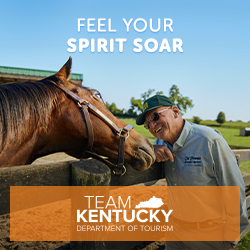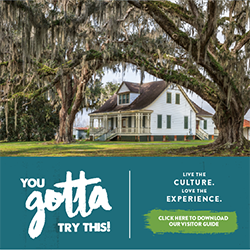
Courtesy Oklahoma City CVB
A Western Wonder
Perhaps the most notable museum in Oklahoma City is the National Cowboy and Western Heritage Museum, which introduces visitors to some of the most iconic characters and images from the Old West.
Upon entering the museum, visitors first see an 18-foot sculpture called “The End of the Trail,” a depiction of a weary Native American on horseback created by artist James Earl Fraser. The sculpture is a perfect introduction to the museum’s large collection of Western art, which includes thousands of works by American artists, including Charles Russell and Frederic Remington.
In addition to the art, the museum showcases other pieces of memorabilia in areas such as a firearms gallery and a Native American gallery. The Western performers gallery has clothing and movie props used by John Wayne, Roy Rogers, Dale Evans, Tom Selleck and other stars.
One of the major attractions at the museum is Prosperity Junction, a two-story indoor re-creation of a 1900s Western prairie town. Visitors also enjoy the museum’s outdoor sculpture and landscape garden, its rodeo gallery and its gallery of the American cowboy, which deals with the history of cowboys across the country.
A Place to Remember
Perhaps no other single event has impacted Oklahoma City as much as the 1995 bombing of the Alfred P. Murrah Federal Building that killed 162 people. Today, the Oklahoma City National Memorial is a touching tribute to those who lost their lives that day, as well as to the blast survivors and rescue workers.
The memorial’s outdoor portion is highly symbolic, with two large “Gates of Time” marking the minutes before and after the bombing occurred. In between, in front of a large reflecting pool, sit 162 empty chairs inscribed with the names of the victims.
At the memorial museum, visitors will find exhibits that describe life in Oklahoma City before and after the attack. Artifacts include fragments of rubble from the surrounding area, as well as uniforms worn by rescue workers at the site. Visiting groups can take part in a historical preservation program in the museum’s archive room or arrange to visit with locals for firsthand accounts of their experiences on the day of the attack.
“They can have a survivor, a rescue worker or a family member come in,” Price said. “One of them is the officer who arrested Timothy McVeigh. His whole story is about divine intervention and how it helped to lead up to the arrest. It’s very personal, almost like you can touch the experience.”
Although the memorial marks the spot of a tragic event, it inspires hope that a community can rise from the ashes and overcome disaster with new life. Visit Oklahoma City, and you’ll find a community that has overcome in a brilliant way.
Oklahoma City Convention and Visitors Bureau
800-225-5652
www.visitokc.com









